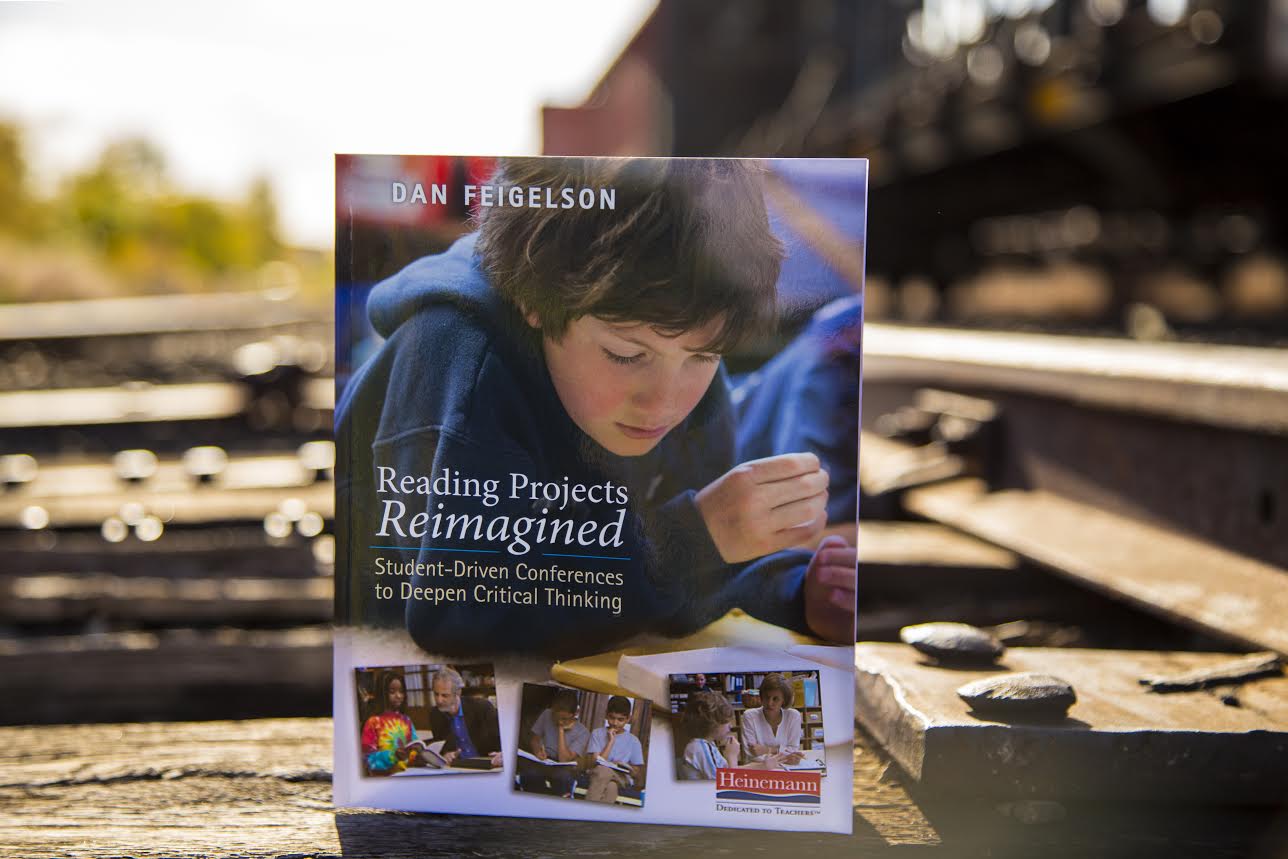 Reading Projects Reimagined by Dan Feigelson
Reading Projects Reimagined by Dan FeigelsonIn his new book,Reading Projects Reimagined, veteran teacher and author Dan Feigelson raises an important question about the larger goal of reading instruction: while it’s our job as reading teachers to introduce students to new ideas and comprehension strategies, shouldn’t we also teach them to come up with their own ideas - without teacher prompting? In the book, Feigelson shows us how conference-based, individual reading projects help students learn how to think for themselves. Today's blog is an excerpt from Reading Projects Reimagined.(Click here to read Dan Feigelson's previous blog on helping kids expand their own ideas.)
Chess, Jazz, and Reading
Written by Dan Feigelson
Professional chess players compete. They need to be acutely aware of each move in the game, not only in the moment, but also to anticipate what may happen next. Since every match is different, chess players must pay attention to what is going on here and now, while keeping in mind strategies that worked in the past. They can’t follow scripts. “I missed the strongest move . . .” Grandmaster Garry Kasparov reflected after a rare loss. “I was so entranced by my vision of the gold at the end of this rainbow that I stopped looking around as I approached it.”
Jazz musicians improvise. They need to be sensitive to what the band is doing behind them, to the mood in the room—not to mention the structure, harmony, and feeling of the song. Since each performance is a bit different, jazz soloists must be listening and reacting all the time. The best ones never play a song exactly the same way twice. “I can’t stand to sing the same song the same way two nights in a row,” Billie Holiday famously claimed. “If you can, then it ain’t music, it’s close order drill, or exercise or yodeling or something, not music.”
Clearly, the magical moments in any field are the ones where we invent things we never thought of before—and they turn out to be exactly right. But no one can count on this happening all the time.
Chess players may not follow scripts, but they do remember past situations. They mix and match strategies encountered before in order to decide how to move forward in each new game. “Chess masters are known for their remarkable memory for the pieces on a chessboard. But it’s not because people with photographic memories become chess masters,” explains Steven Pinker. “The masters are no better than beginners when remembering a board of randomly arranged pieces. Their memory captures meaningful relations among the pieces, such as threats and defenses, not just their distribution in space.” In other words, there are certain setups that occur in many games. The key to being “spontaneous” in chess is knowing which past scenarios may apply to a new situation, and when to apply them.
Similarly, while a jazz musician strives to play something unique in every solo, most have set melodic phrases, or “crips,” to draw on as a starting point. Often it is not the actual melodies that are new, but the way they are put together. “I’ve found,” remarked master saxophonist John Coltrane, “that you’ve got to look back at the old things and see them in a new light.” When horn players encounter a predictable song structure—a slow blues or a bright, up-tempo AABA swing tune—they mix and match what they already know to create something original.
It is not so different in the teaching of reading. Developing conference-based reading projects involves listening carefully to what students say about a text, and helping them name an idea worth following. On the surface, it would seem this is not something a teacher can plan for—after all, each child is unique. Moreover, students in a given class may be reading different texts.
The truth is that although no two children are exactly alike, we can often predict directions that a conference with a particular age reader may go. Fourth-grade teachers notice patterns in the sorts of things their nine-year-olds think about as they read; a sixth-grade teacher, like it or not, begins to anticipate the comments of her eleven-year-olds. Some of these conference types have to do with the developmental level, and some are specific to a particular group of students.
Putting knowledge of an age group together with end-year-end expectations for each grade, it is possible to go into a conference with some idea of possible directions—and be ready to mix and match them, when appropriate, for the individual child. Like a jazz soloist or professional chess player, over time a reading teacher may develop a repertoire of “go-to” conferences—or “crips”—to fall back on when a brand new idea is not forthcoming.
Click here for a sample chapter of Reading Projects Reimagined and to learn more about the book.



